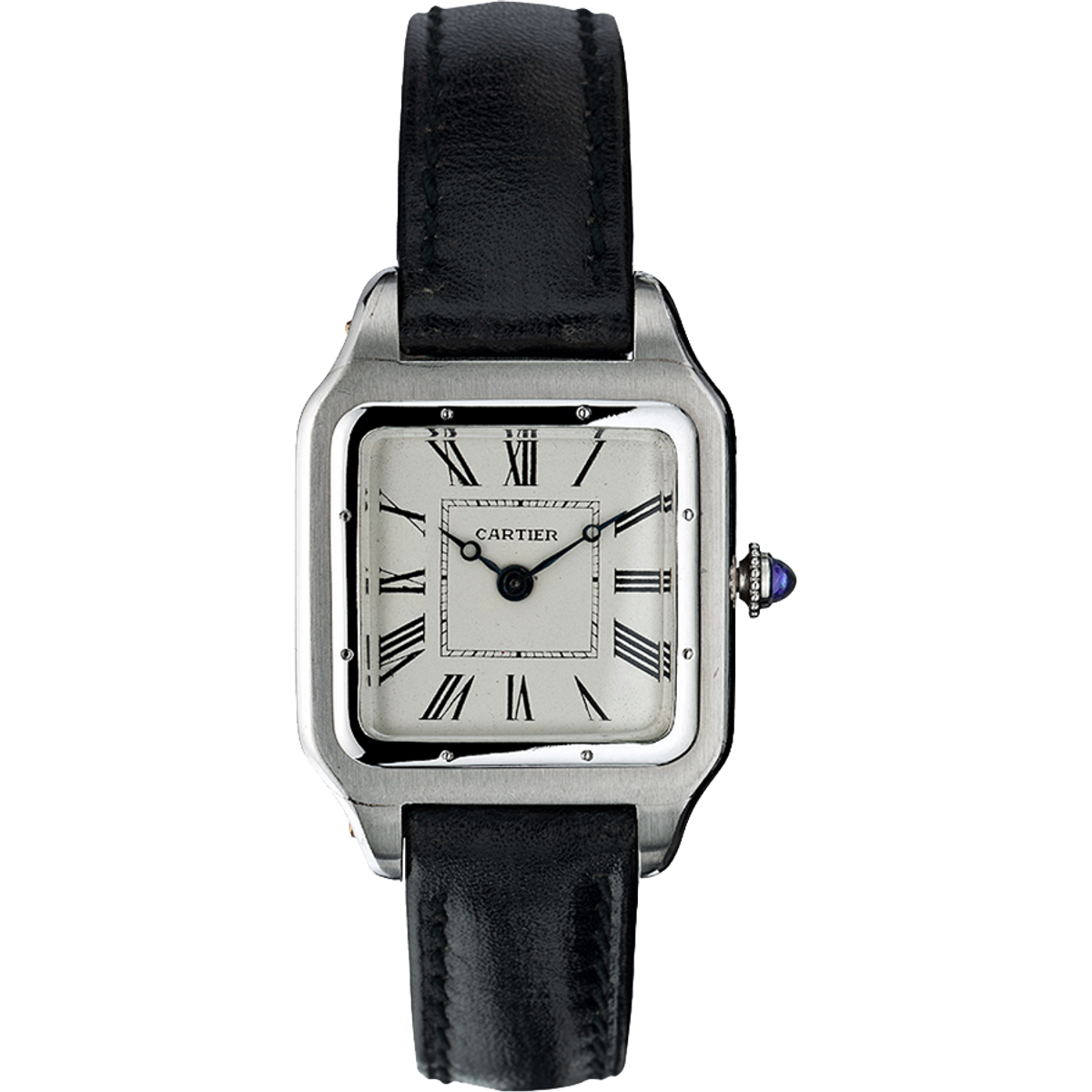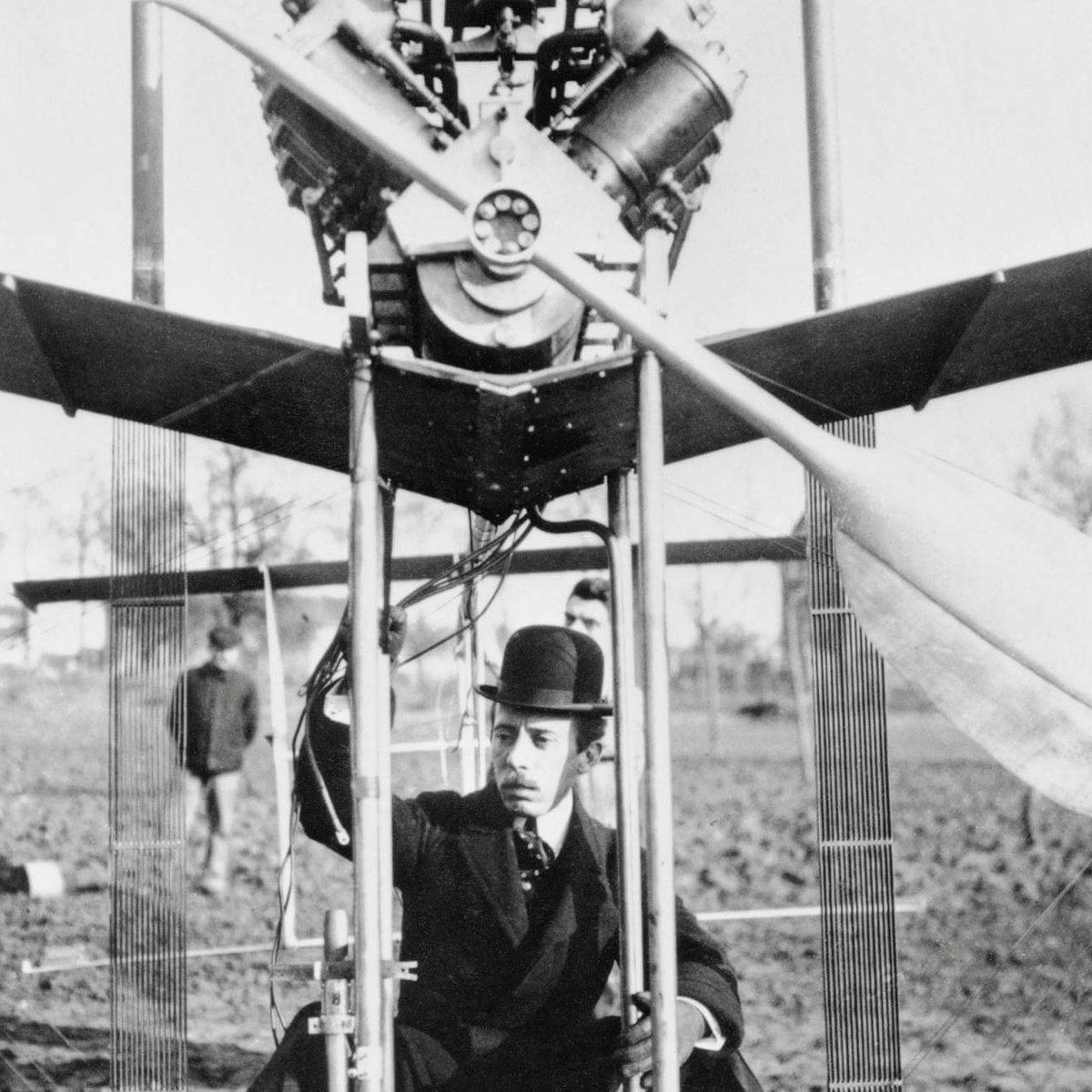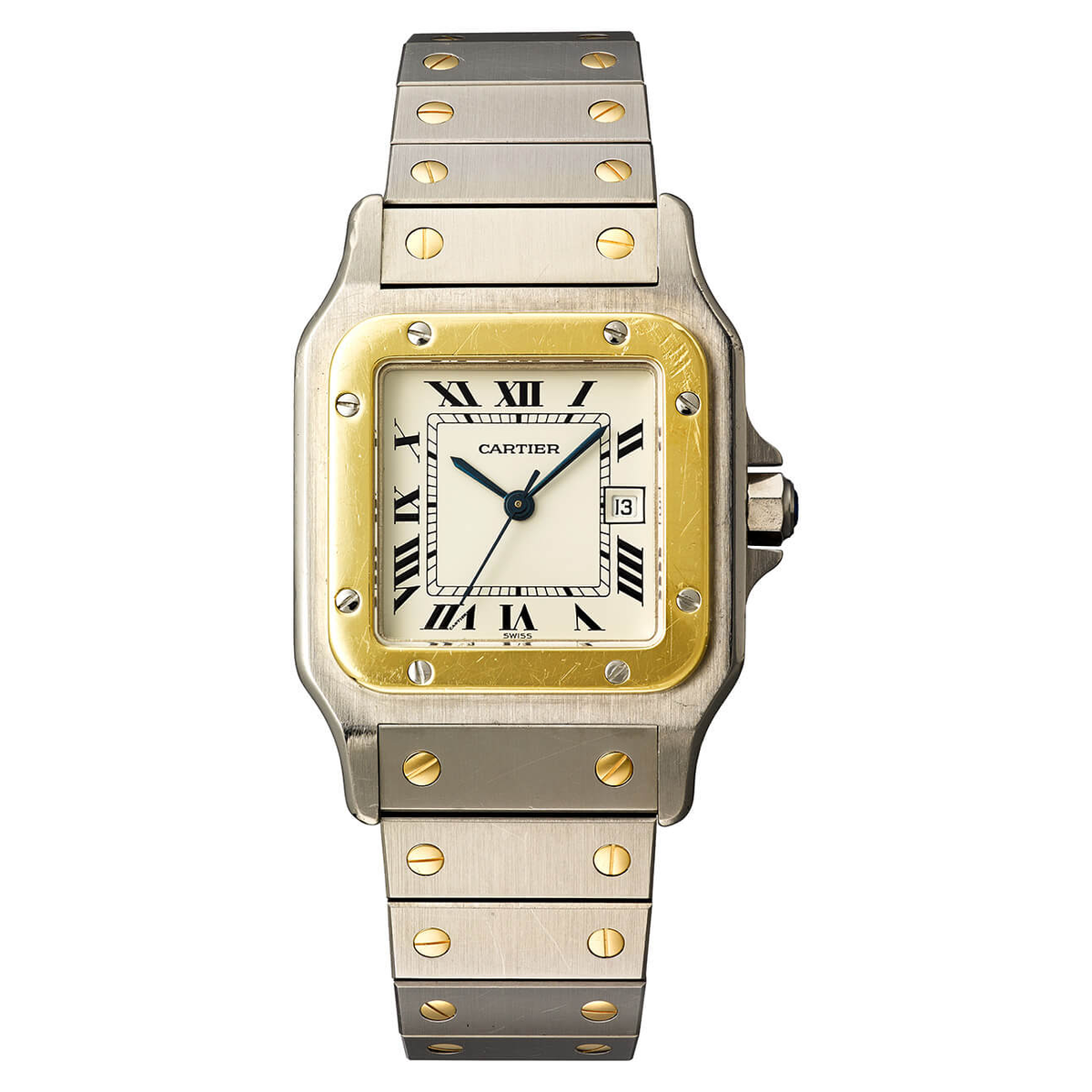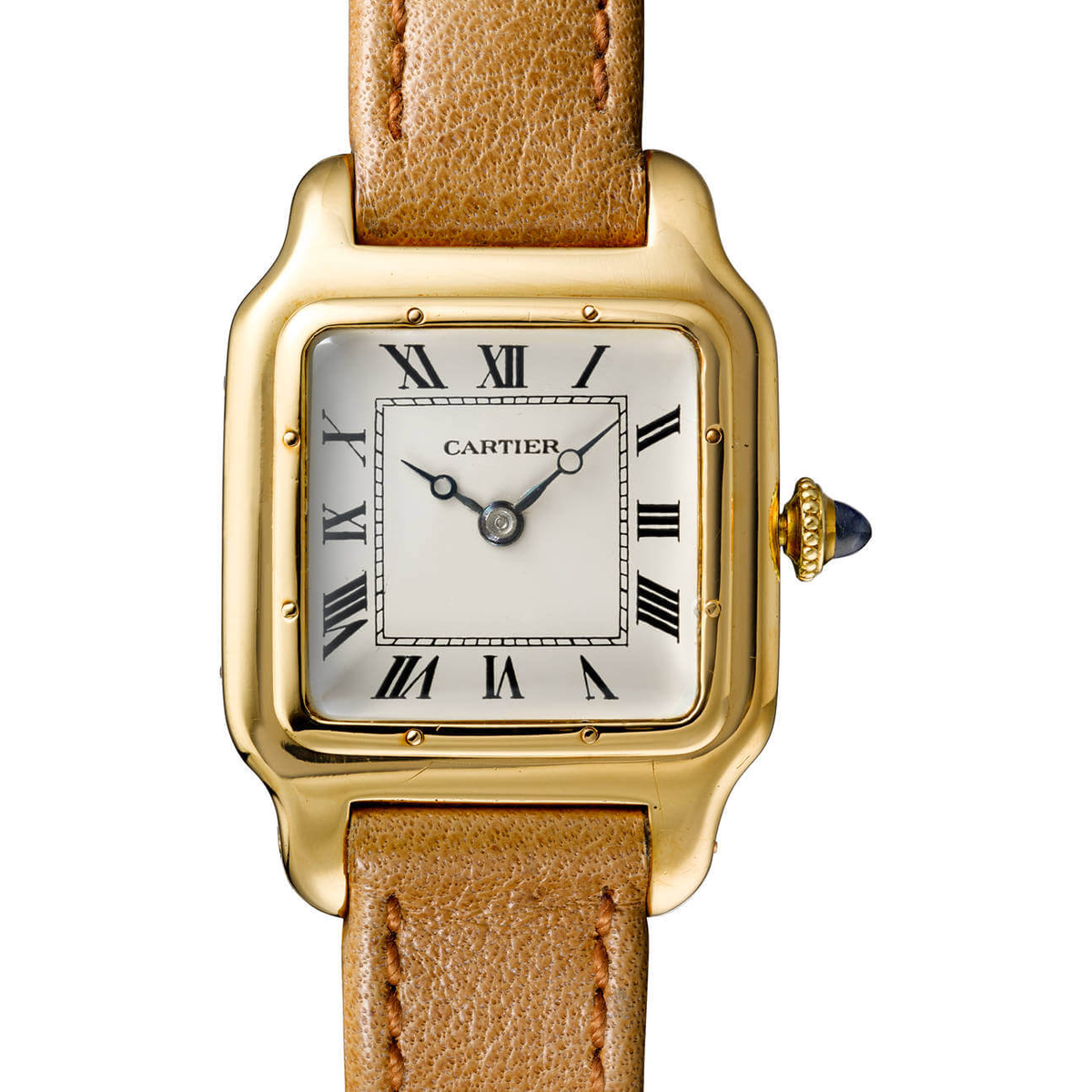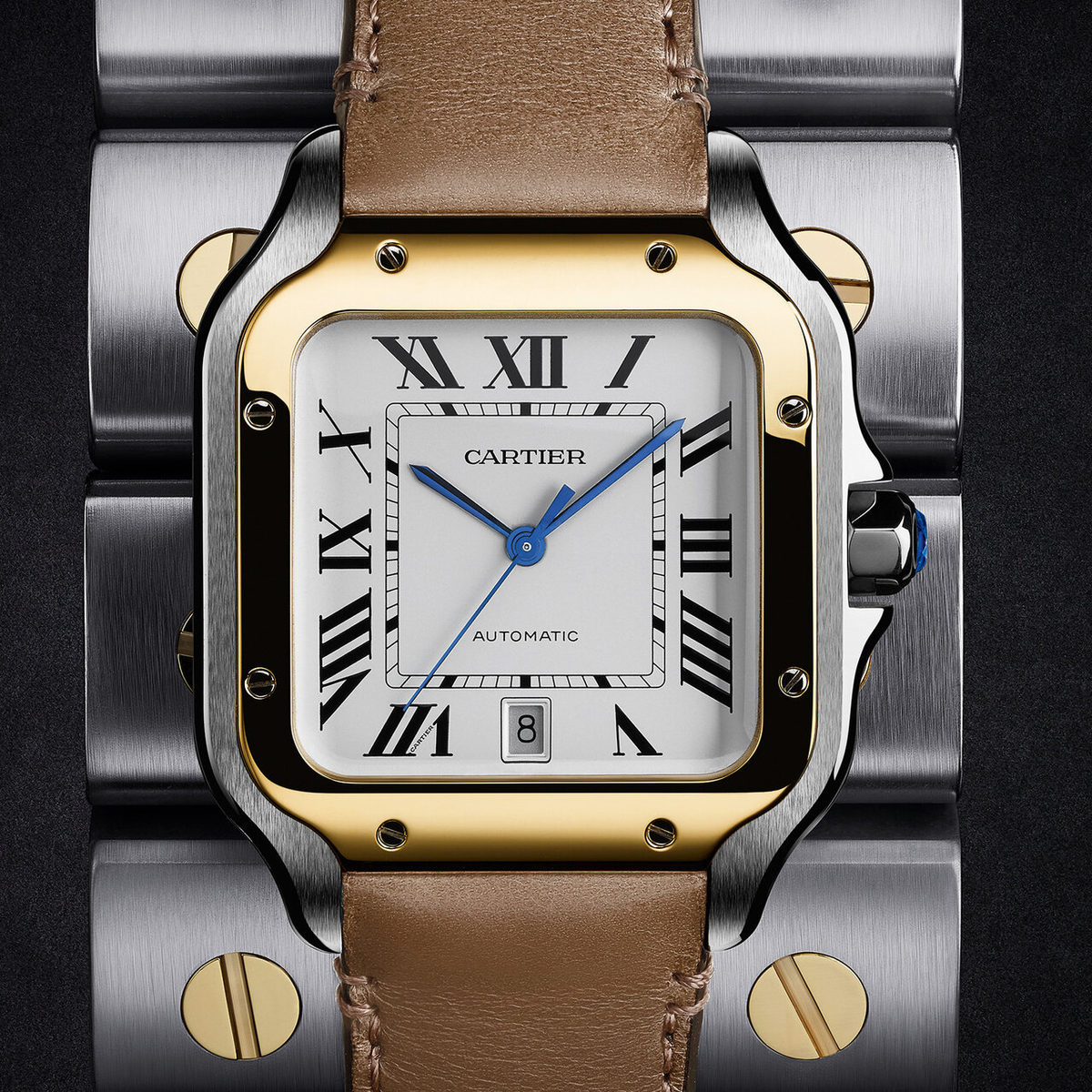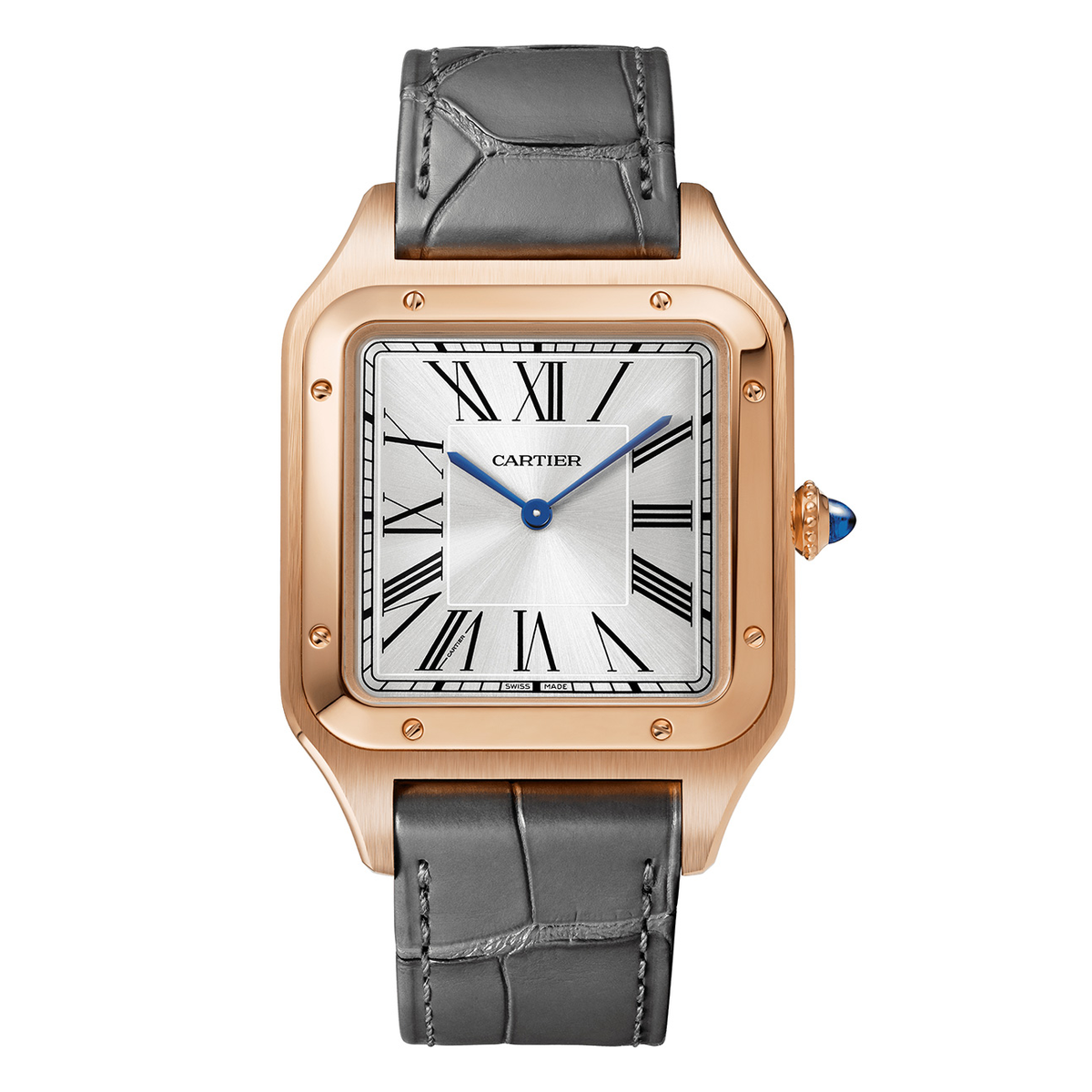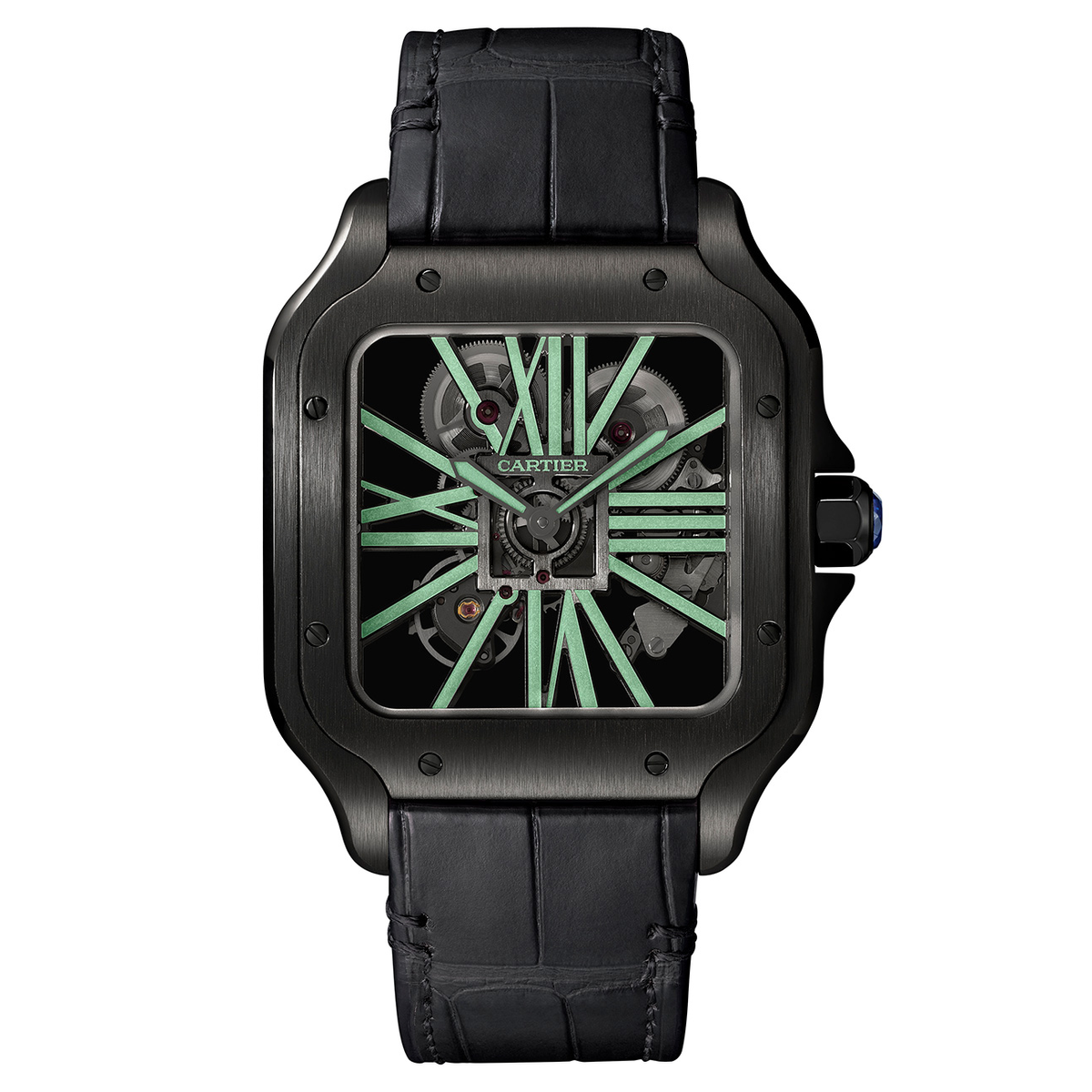Form meets function in this practical and elegant object that marks the beginning of Cartier's odyssey in 'form' watches.
Launch Year
1904
Functions
hours, minutes, large seconds, date
Movement
mechanical self-winding
Distinctive features
steel and yellow gold ‘form’ case, tool-free interchangeable and adjustable strap
Created in 1904 for aviation pioneer Alberto Santos-Dumont, the emblematic Santos by Cartier heralded the dawn of a new era in Fine Watchmaking. This model not only marked the beginning of the contemporary wristwatch; it also distinguished itself as an early embodiment of Cartier design codes.
As is often the case, the creation of the Santos was determined by its historical context. The city of Paris was in a state of cultural, technical and scientific effervescence, and the grandsons of the founder, Pierre and Louis Cartier, were moving in influential circles where the future of society was taking shape. Louis was passionately interested in aviation and kept a close eye on the work done by the commissioners at the Aéro-Club de France, who were tasked with timing flights, judging records as well as noting the potential of various engines and fuels. It was there that he met Alberto Santos-Dumont, for whom the first Cartier wristworn men’s watch would be created in 1904. Simply named the Santos, it was commercialised by Cartier several years later, from 1911 onwards.
From an aesthetic standpoint, the design of the Santos clearly alludes to the steel monuments and structures dotted around Paris. A square, solidly riveted bezel; a dial adorned with a railroad minute track; a crown topped by a cabochon-cut sapphire. Form meets function in this practical and elegant object that marks the beginning of Cartier's odyssey in 'form' watches.
In 1978 the Santos watch appeared in a new gold and steel version; an aesthetic that would be largely reprised in the models unveiled in 2018. The square shape and straight lines borrowed from Parisian architecture remain unchanged. The lines of the bezel, still with its eight screws, have been slightly elongated so as to create a smoother connection between the case and the bracelet. The heart of the watch - the mechanical self-winding 1847 MC calibre indicating the hours, minutes, large seconds and date – has been upgraded to resist powerful magnetic fields.
The bracelet/strap, which represents a key element in the history of this watch, is the object of considerable attention, with steel or gold bracelet versions, as well as calfskin and alligator leather straps. A simple press on Cartier’s patented QuickSwitch system releases the strap or bracelet from the case and enables smooth swapping and changing. The metal bracelet is also easily adjusted to the size of the wrist via an invisible mechanism serving to add or remove links without any special tools. In 2019, as well as a Santos chronograph (calibre 1904 CH-MC), Cartier launched a slimmer execution for the model’s 115th anniversary, which it called the Santos-Dumont. Initially offered with a quartz movement, it has since appeared in a range of sizes, colours, metals and movement options, including several limited editions.
Key Characteristics
- First contemporary men’s wristwatch with a square-shaped case
- Tool-free interchangeable and adjustable strap/bracelet
